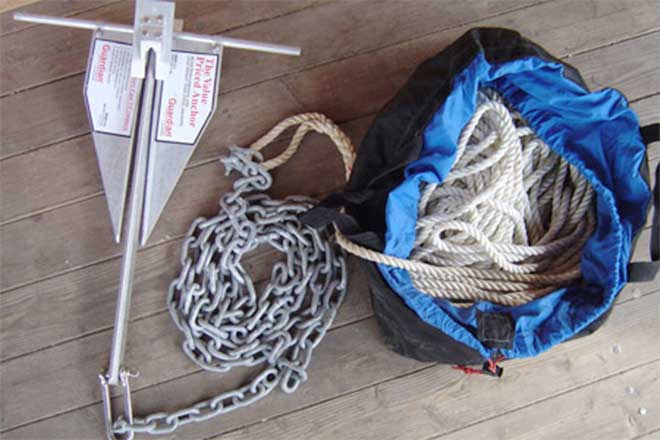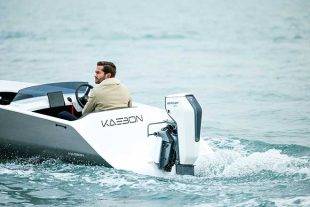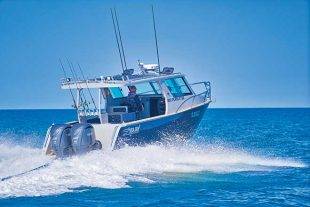A BOAT anchor is used when you want to stop and fish, swim, have lunch or stay overnight.
It is also an important piece of safety equipment. Even if you do not plan to use it, an anchor is imperative if a boat breaks down. An anchor will keep the boat in the one location or reduce the rate of drift until help arrives. When at anchor, remember changes in wind and sea conditions can affect the holding power of ground tackle, compromising the safety of the boat.
Anchors must be of a type that will work in the relevant seabed and with enough line to suit the depths in which you usually operate. Other than for an emergency, boats must not anchor in channels, near navigation beacons or important notices on the shore such as cable crossing signs.
Following is a comprehensive on how to anchor your boat correctly.
Types of anchors
Several types of anchor are suited for different applications.
A Danforth anchor is most commonly recommended for, and used by, small craft.
The Danforth is a small, light anchor with excellent holding power in mud and sand that can be easily handled in a small boat.
Reefs should be avoided because the flukes may wedge between rocks, causing the retrieval of the anchor to be difficult.
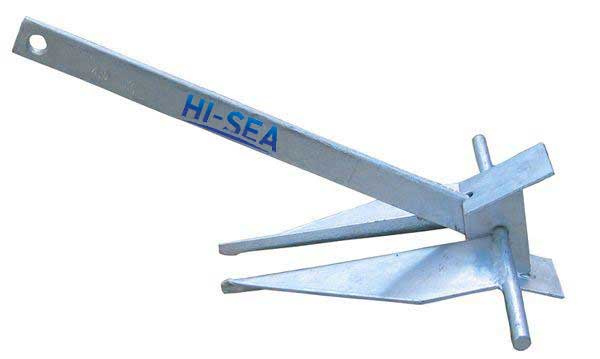
CQR or plough anchors are most commonly used by larger, heavier boats, but can be used in small craft. These anchors have good holding power in sand and mud but should not be used on reefs. Reef or grapnel anchors are designed to hold on coral and rocks.
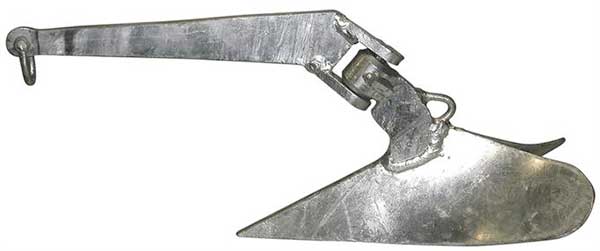
Other types of anchors will lodge under coral and that’s where they will remain. The prongs on a reef anchor are meant to straighten out when excessive load is applied and can then be bent back into position. They also cause less damage to the coral. In coral reef areas, it is better to anchor on sand where a Danforth or plough anchor is more suitable. Do not anchor on coral unless in an emergency.
A sea anchor or drogue is used in heavy seas to slow the drift and keep the bow of the boat into the wind and waves. This will also provide more comfortable conditions when drifting in choppy seas. If you plan to go boating offshore or on an extended trip, a sea anchor is a valuable piece of equipment.
Anchor lines
Anchors also must have something to attach them to the boat. This is called the anchor rode and may consist of line, chain or a combination of both. The whole system of gear including anchor, rope and shackles is called ground tackle.
Anchor lines are important. Don’t use an anchor line that floats, such as polypropylene. It can hinder the anchor from digging in and holding and is also prone to being cut off by passing boat propellers. Nylon and silver rope are both suitable materials for anchor lines.
Nylon is best known for its strength and stretching ability as well as being more resistant to abrasion. Silver rope has less tensile strength. You should always have a good length of chain measuring at least a boat length. So on a 5m boat you want 5m of chain between the anchor and anchor line.
The purpose of the chain is to keep the stock or shank of the anchor parallel to the seabed to allow the flukes of the anchor to gain maximum penetration into the seabed.
Chain also helps prevent the anchor line chafing on the bottom. The length of the anchor line may need to exceed five times the depth of the water in which you normally operate. If you mark off the rope at regular intervals with coloured twine, you’ll know how much rope to release so the anchor sets correctly.
Scope
Scope means the ratio of the length of anchor line let out to the depth of water in the place you are anchoring. It is essential to use the proper length of anchor line to hold the boat in all conditions. To calculate how much line to let out, allow for a ratio of five to one.
If conditions are extreme, increase the ratio to eight to one. The flatter the pull on the anchor, the better it will hold. The ability of the anchor to hold the boat will also vary with the nature of the seabed.
Anchoring
Keep the anchor, its chain and rope tidy – many boats have a chain locker or well, though a plastic crate, bin or open bag keeps things neat. Leave the end out (or feed it through a hole in the crate or bin) to tie to the boat, and then lay the rope down coil by coil, then the chain and anchor.
Ensure the end is secured to the boat. Charts and local knowledge will show you where to find good holding ground, but beware of submarine cables and other moorings. When anchoring, lower the anchor to the bottom, don’t pick up a bundle of anchor chain and line and throw it over, hoping it will untangle.
Always lay your anchor line out, let it touch bottom and let the boat drift back until sufficient line is paid out. Don’t be tempted to anchor by the stern. Anchoring by the stern causes the stern of the boat to sit lower in the water.
Any wave action or even the wash of other boats can cause water to flow over the stern.
Always anchor by the bow. Ensure you take into account the rise and fall of the tide when selecting a long-stay anchorage. Like anything, there’s a proper way to anchor:
- Select an area that offers maximum shelter from wind, current, boat traffic and so forth.
- Consider how your boat will lie in relation to others. Pick a spot with swinging room in all directions.
- Determine depth and bottom conditions and calculate the amount of rope you will put out.
- Lay out the amount of rope you will need on deck in such a manner that it will follow the anchor into the water smoothly without tangling. Ensure its end is secured to the boat.
- Motor slowly into the wind or tide to just ahead of your chosen spot.
- Wait until you start to drift backwards, then lower the anchor, checking the marks on the rope.
- When it touches bottom, slowly pay out the required scope (gentle reverse propulsion may assist), then secure the rope to a cleat.
- Motor gently back against the anchor to dig it in and ensure it is holding.
- While still in reverse, observe a transit between two fixed features to be sure the anchor isn’t dragging. This can also be determined by observing the angle of the rope away from the boat and placing your fingers on top of the rope to feel for any vibration that would accompany the dragging of an anchor over the seabed.
- Check frequently to make sure you are not drifting.
- Don’t forget to show the correct lights at night. Always use an all-round 360-degree white light mounted as high as possible so it can best be seen.
Warm the engine and then motor slowly along the line of the anchor rope, bringing in the rope and feeding it into the bin or locker. Don’t over-run the rope. In small boats always try to handle the anchor from the cockpit, not the foredeck.
When the boat is directly above the anchor, a good pull or, with the line secured on a cleat, a short push ahead under power should release it from the seabed. Once free, raise the anchor to the waterline. Clean if necessary and let the rope dry before stowing.
If the anchor becomes caught, do not move the boat over the top of the anchor in an attempt to dislodge it because it may cause the boat to overturn. If you cannot dislodge the anchor, it is safest to cut it off. A handy hint is to wear gloves when hauling in the anchor.
Colin Hinder
 Bush 'n Beach Fishing Magazine Location reports & tips for fishing, boating, camping, kayaking, 4WDing in Queensland and Northern NSW
Bush 'n Beach Fishing Magazine Location reports & tips for fishing, boating, camping, kayaking, 4WDing in Queensland and Northern NSW
